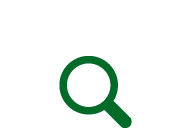Aerial imaging
Aerial imaging (aerial photography) remains a powerful tool in mapping, land management, and environmental monitoring. Vertical stereoscopic aerial images have been using by national agencies and surveying companies as the main source to create and actualize topographic maps.
Aerial imaging situates between satellites and unmanned aerial vehicle (drones), providing very high resolution imagery (up to 5 cm) than a satellite (0.4-5 m) and covering a far larger areas than drones. Aerial cameras of mapping class capture images with resolution of 80 to 140 megapixels, which is especially convenient for highly urbanized areas, and collect data in panchromatic and multispectral bands. Many planes are also equipped with LIDARs. Light planes can operate below cloud coverage, which makes them less dependent on weather conditions.
Most of UAVs have low load-carrying capacity, so they equipped with 5-10 megapixel cameras. Meantime UAVs have a lot of advantages including flexibility of operation, applicability to small projects etc. The main disadvantage of drones is that the UAV cameras produce images with significant amount of distortions. It requires special photogrammetric processing, but it still does not guarantee success. On the contrary, the main advantage of classic aerial imaging is it provides geometrically accurate images coupled with digital elevation models.
LiDAR produced very dense X, Y, Z measurements on the terrain surface utilizing a laser transmitter with high repeating pulse frequency and a high speed scanning system. In that way LIDAR provide high-density point clouds with unparallel spatial accuracy. And point clouds can be transformed into very accurate digital terrain models (DTMs) and digital elevation models (DEMs). They have very high spatial resolution of up to 1.2 m, and vertical of 20-30 cm or even better.
Zesmill operates Hasselblad medium-format aerial camera, Optech ALTM Gemini LiDAR, and Applanix GPS/IMU logging system.
Also together with our technical partners, Abby Aerial Imaging, Australia, and DP Aerogeodesiya, Ukraine, we can offer aerial and LIDAR survey services not in Europe only, but also throughout Middle Asia, South East Asia, and Oceania. Both partner companies employ much more powerful imaging systems (including Vexcel UltraCam X) than we do.
For small surveying projects, close range imaging, and video recording we use Spectator Phantom unmanned aerial vehicle.
Using all these facilities we can perform aerial surveys over small and large areas with accuracy down to 6-7 cm and create:
- Very high resolution (up to 4 in /10.1 cm) and high-resolution (up to 30 in / 76 cm) aerial imagery
- Othophotos (orthoimagery)
- Oblique aerial images
- LIDAR height data
- 3D models
- Digital elevation models (DEM)
- Digital terrain models (DTM).
Our photogrammetric team is equipped and highly trained in the use of state of the art imaging and photogrammetric technologies.
Zesmill’s photogrammetric department also provides outsourcing services for aerial imaging companies utilizing both airborne mapping camera and UAV (drone) technologies. We offer a wide range of photogrammetric operations at reasonable price starting at 9.5 EUR/sq.km including mosaicing, aerial triangulation, digital orthorectification, processing of UAV imagery even with large distortions, relief contour generation, DEM generation and verification. We also delivers satellite imagery processing and photogrammetry services for great prices as well.








